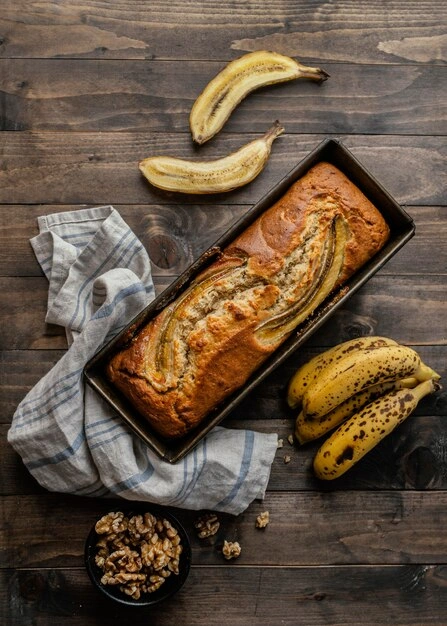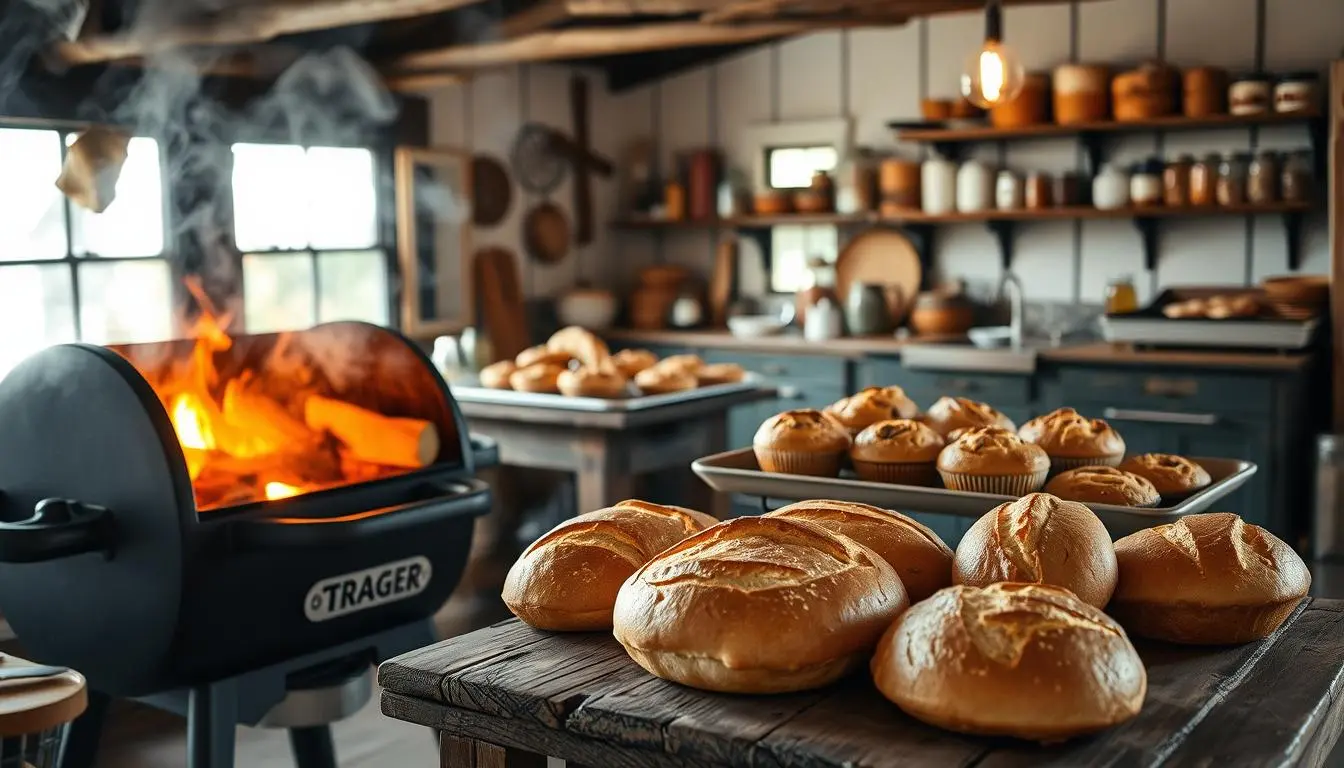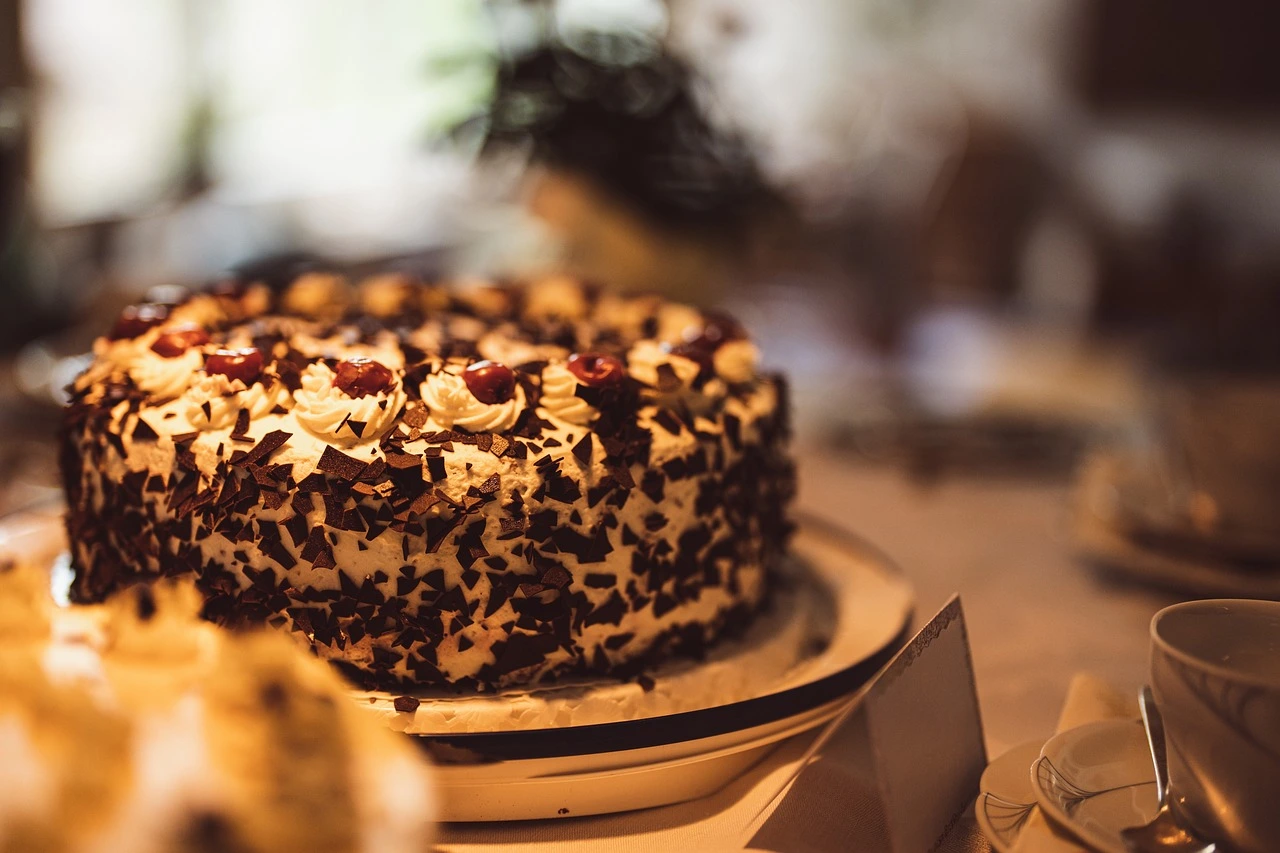Table of Contents
Discover the joy of baking with einkorn, an ancient grain that’s gaining popularity. This easy einkorn bread recipe makes it simple to create a nourishing loaf. It’s perfect for beginners or those looking to try something new. You don’t need complex techniques; just follow basic steps tailored for einkorn.
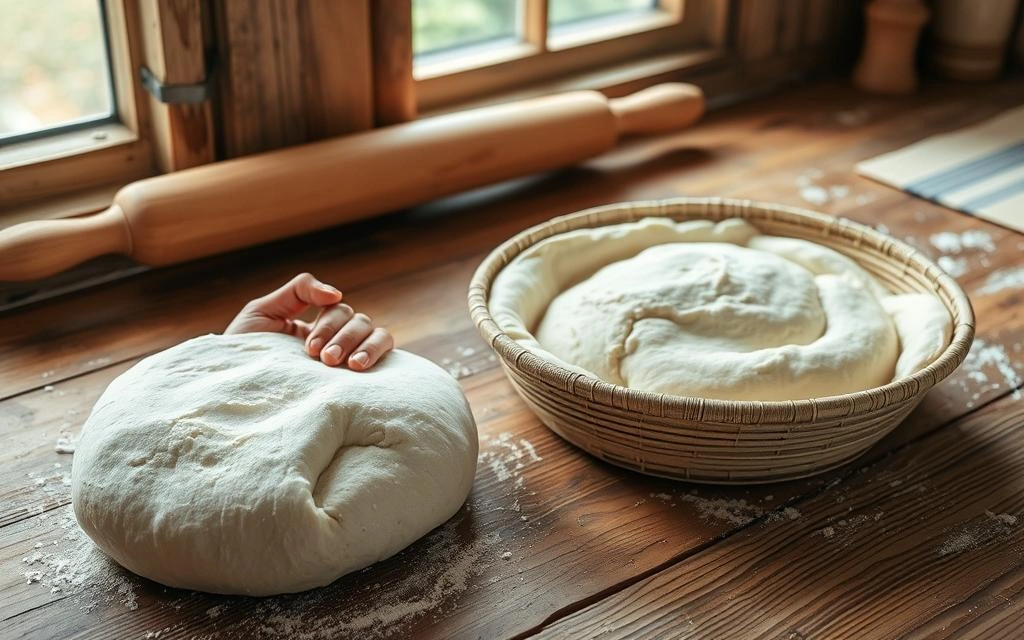
Einkorn stands out because of its softer gluten and richer nutrients. This recipe combines tradition with ease, making bread that’s easier to digest. It’s packed with protein and vitamins. You’ll learn how to adjust your baking for einkorn’s unique needs, from mixing to baking.
Key Takeaways
- Make easy einkorn bread recipe with minimal effort using this step-by-step guide.
- Einkorn’s gentle gluten structure simplifies baking while boosting nutrition.
- Perfect for all skill levels—no prior experience with ancient grains required.
- Learn how ancient grain bread compares to modern wheat loaves in taste and texture.
- Preview tips to troubleshoot common baking challenges specific to einkorn flour.
What Makes Einkorn Flour Special for Bread Baking
Choosing einkorn flour bread or ancient grain bread means you’re picking a legacy older than most crops today. This ancient grain stands out for its taste and health benefits. Its history, nutrients, and gluten structure make it unique.

The Ancient History of Einkorn Wheat
Einkorn wheat grew in the Fertile Crescent over 10,000 years ago. It was domesticated long before modern wheat hybrids. Its simple genetics keep the qualities that fed ancient civilizations, making it a true heirloom.
Nutritional Benefits of Einkorn Compared to Modern Wheat
- Higher protein: 15% more than modern wheat.
- 3x the lutein for eye health.
- Natural zinc, iron, and magnesium levels 20-40% greater.
- Lower phytic acid means your body absorbs more nutrients.
Many people with wheat sensitivities find einkorn easier to digest than conventional bread options.
Understanding Einkorn’s Unique Gluten Properties
Einkorn’s gluten lacks the strong glutenins found in modern wheat. This makes dough softer and it rises differently. Expect lighter loaves with a tender crumb, unlike regular ancient grain bread. Less kneading is needed, but patience in proofing is key for the best results.
Essential Ingredients for Your Homemade Einkorn Bread
Choosing the right ingredients is key to making your homemade einkorn bread special. Start with einkorn flour. You can pick whole-grain for a denser loaf or bolted for a lighter one. Remember, the type of flour affects how much water you need.
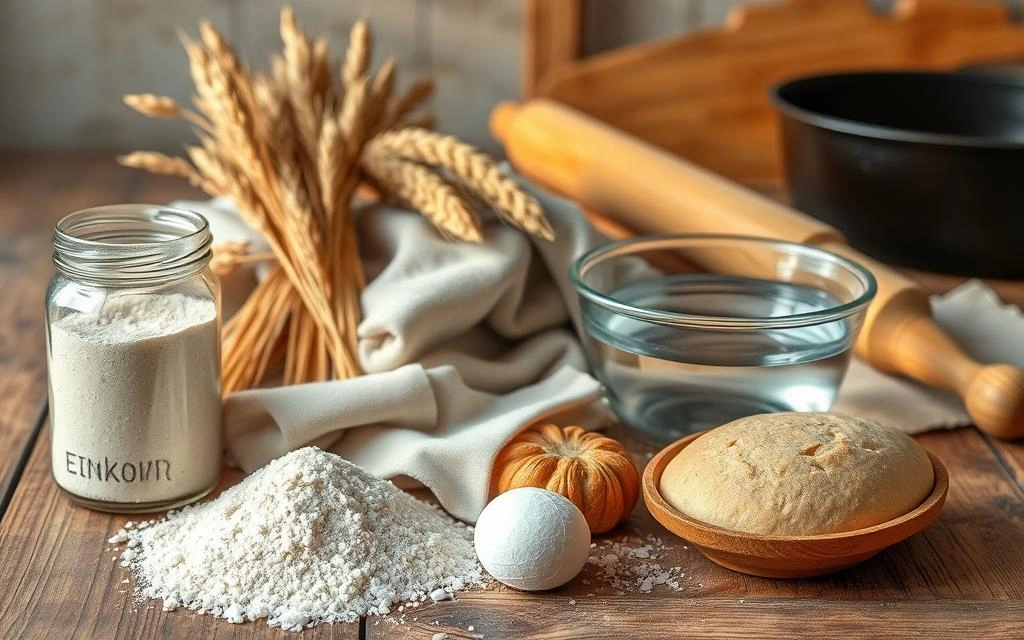
- Flour: Whole-grain einkorn gives a rich taste; bolted flour makes it softer. You can use 100% einkorn or mix it with other flours for different bread styles.
- Water: Use filtered or mineral-rich water to help enzymes work better. Cold water makes the dough rise slower, while room-temperature water speeds it up.
- Salt: Choose flaky sea salt or coarse kosher salt. Stay away from iodized salt to avoid bad tastes.
- Yeast: Instant yeast is easy to use; active dry needs to be proofed first. Wild yeast, or sourdough, adds a deeper flavor over time.
- Fats: Add olive oil or clarified butter for extra moisture. Use 1-2 tablespoons for richer breads like focaccia or dinner rolls.
Use a scale to measure ingredients for the best results. If you need to substitute, almond flour or psyllium husk can help. Always check your yeast by mixing it with warm water and sugar before making the dough. The right mix of ingredients makes your homemade einkorn bread delicious and healthy.
Step-by-Step Einkorn Bread Recipe
Learn the easy einkorn bread recipe with these simple steps. They will help you make homemade einkorn bread with a soft texture and nutty taste.
Mixing and Kneading Techniques for Einkorn Dough
Einkorn dough needs gentle care because of its delicate gluten. Here’s how to do it:
- Mix dry ingredients (einkorn flour, yeast, salt) in a bowl.
- Add water slowly until dough forms—einkorn absorbs liquid quickly.
- Knead for 8–10 minutes by hand or 5 minutes with a mixer. Stop before it gets too elastic.
Check if the dough feels slightly sticky but not too stretchy.
Proper Fermentation and Rising Times
Let the dough rise in a warm, draft-free place. Follow these steps:
- First rise: 1–1.5 hours until it doubles in size.
- Shape the dough, let it rest for 30 minutes (second rise).
- Check if it’s done by pressing it—it should spring back slowly.
Baking Temperature and Time Guidelines
Preheat the oven to 425°F (220°C). Here’s what to do:
- Score the dough surface before baking.
- Put a pan with boiling water in the oven for steam.
- Bake for 30–35 minutes until the crust is golden and the inside is 205–210°F (96–99°C).
Cooling and Storage Methods
Cool the bread on a wire rack for at least 30 minutes before slicing. Store it:
- In a cloth bag at room temperature for 2 days.
- Sliced portions in the fridge for 3–4 days.
Never wrap it in plastic—it traps moisture and makes the crust soggy.
Common Challenges When Baking with Einkorn Flour
Mastering einkorn flour bread means getting used to its special ways. Here are tips for solving common problems:
- Hydration Levels: Einkorn’s gluten can’t hold as much water. Start with less liquid and add slowly. The dough should stick a bit but not break easily.
- Over-Kneading: Mix gently. Stop when the dough keeps its shape without too much effort. Too much kneading makes the bread dense.
- Fermentation Timing: Einkorn rises faster than modern wheat. Check if the dough is ready by lightly pressing it. If it leaves an impression, it’s time to bake.
- Oven Spring Limits: Einkorn doesn’t expand as much. Shape the dough tightly and bake with steam to help it rise.
- Texture Issues: If the bread is too soft in the middle, it’s not baked enough or has too much water. Try adding a little less water next time. Use a thermometer to check the internal temperature (190–210°F).
“Einkorn’s quirks reward those who adapt its baking science.”
Every category bread has its own needs, and einkorn is special because of its ancient genetics. Keep an eye on how much water it absorbs and how fast it rises. If your first loaf is too dense, try adjusting the water ratio next time.
Try different proofing times or add steam to the oven to bring out einkorn’s best. Remember, einkorn’s gluten is more delicate than modern wheat. Be patient and make small changes until you get the texture you want. With practice, you’ll become a pro at baking with einkorn.
Delicious Variations of Einkorn Flour Bread
Make your einkorn flour bread stand out. Try tangy sourdoughs or seeded loaves. These changes keep einkorn’s heritage alive while adding a modern twist.
“The simplicity of einkorn makes it a timeless canvas for innovation,” says a historic grain expert.
Einkorn Sourdough Bread Option
Try einkorn sourdough bread by starting a sourdough starter. Use 65% hydration to balance its gluten. Ferment for 12–16 hours for a light tang.
Pro tip: Feed your starter with equal parts flour and water 8 hours before mixing.
Mix-In Magic with Seeds, Nuts, and Fruits
- Sunflower seeds or pistachios add crunch—add 1/3 cup to dough before shaping.
- Soak dried apricots overnight to soften; fold into dough last 5 minutes of mixing.
- Try poppy seeds with honey butter for a European twist.
Sweet & Savory Twists to Elevate Your Loaf
For breakfast, mix in 2 tbsp maple syrup and vanilla extract. For dinner, add 1 tsp rosemary and 1/2 tsp sea salt. Try these:
- Cinnamon-swirled loaves with 1/4 cup chopped walnuts
- Herbed varieties with thyme and garlic
- Fig-and-blue cheese einkorn flour bread for charcuterie boards
Why Your Family Will Love This Ancient Grain Bread
Ancient grain bread has a sweet aroma and a nutty taste that modern wheat can’t match. Its soft texture stays fresh longer because of natural antioxidants. .
Unlike other breads, einkorn’s texture is perfect for sandwiches or toasting. Its gentle gluten is easier to digest, avoiding the heaviness of regular bread. The mild sweetness goes well with butter, jams, or savory spreads, offering flexibility without sacrificing taste.
Baking ancient grain bread brings your family closer to ancient traditions. Its rich flavor sparks interest in food history, leading to interesting conversations at dinner. It’s a favorite for breakfast, lunch, or as a snack after school.
Many families appreciate how this bread meets their taste and health needs. Its simple ingredients and versatility make it a key part of a healthy diet. Choosing ancient grain bread means you’re not just making a meal. You’re embracing a healthier bread option that respects tradition.
FAQ
What is einkorn flour?
Einkorn flour comes from einkorn wheat, an ancient grain over 10,000 years old. It’s known for its unique taste and health benefits, making it a great choice over modern wheat flours.
Can I use einkorn flour for all types of bread?
Yes, einkorn flour works well for many bread types. You can make homemade einkorn bread or einkorn sourdough. But, you might need to adjust how much water you use and how you knead it.
Is there a difference between whole grain einkorn flour and all-purpose einkorn flour?
Definitely! Whole grain einkorn flour has more nutrients and makes a denser loaf. All-purpose einkorn flour is lighter and can make a fluffier bread.
How do I adjust traditional bread recipes when using einkorn flour?
Einkorn flour absorbs water differently than modern wheat. Start with less flour and add more until your dough feels right.
Can I make a sourdough starter with einkorn flour?
Yes, you can make an einkorn sourdough starter! It might need different care than wheat starters, but it’s doable and can make a tangy loaf.
What are some common challenges when baking with einkorn flour?
You might need to adjust how much water you use and avoid over-kneading. Also, einkorn’s fermentation times can be different. Getting these right can make your bread better.
How can I enhance the flavor of my einkorn bread?
Add seeds, nuts, or dried fruits to your dough for extra flavor. You can also try herbs or sweeteners to bring out einkorn’s nutty taste.
Is einkorn bread suitable for everyone?
Einkorn bread might be easier to digest for some with mild wheat sensitivities. But, it still has gluten. If you have celiac disease or severe gluten intolerance, it’s not safe for you.
What makes einkorn a healthier option than modern wheat?
Einkorn has more protein, minerals, and antioxidants than most wheat. It also has less phytic acid, which helps your body absorb nutrients better. This makes einkorn a healthier choice for bread.
What storage methods are best for einkorn bread?
Keep your einkorn bread fresh in an airtight container at room temperature. For longer storage, freeze it. Freezing helps keep the bread moist and soft.

